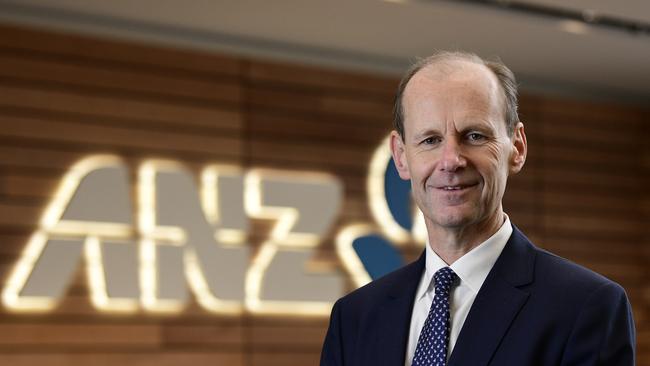ANZ reports flat FY2019 profit
ANZ has posted flat annual net cash earnings for the 2019 full-year and made changes to its dividend.

ANZ Bank has flat annual net cash earnings from continuing operations of $6.47 billion and reported a 7 per cent slide in net profit to $5.95 billion after its retail and commercial business in Australia was hit remediation charges, strong competition and low interest rates.
Cash earnings rose 6pc to $6.16bn.
Chief executive Shayne Elliott said the environment had a “significant” impact on earnings.
“While yet to flow through to the balance sheet, management actions and operational improvements have seen a steady recovery in home loan applications in recent months,” Mr Elliott said.
“This momentum is expected to be maintained into 2020.”
Like the whole banking sector, ANZ has been under pressure from ultra-low interest rates, a slowing economy, heavy customer remediation costs, and ultra-low interest rates.
As the largest bank in New Zealand, ANZ is also the most exposed of the big four to the Reserve Bank of New Zealand’s proposed capital reforms, which will be unveiled in the first week of December.
The RBNZ wants to effectively double major-bank capital ratios so the country can withstand a financial crisis that only occurs once every 200 years.
“This has been a challenging year of slow economic growth, increased competition, regulatory change and global uncertainty,” Mr Elliott said in a statement.
Read more: Banks face a crisis: former Westpac chief David Morgan | ANZ’s OnePath discounted in planned sale to IOOF | ANZ’s Elliott talks trust
“Despite the challenges, we maintained focus on improving customer experience, balance sheet strength and improving our culture and capability. In doing this, we significantly reduced the cost and risk of operating the bank even though strong headwinds impacted the sector. Investment was at record levels and we are a far stronger bank as a result of the progress made this year.”
In spite of the challenging conditions and outlook, ANZ maintained the final dividend at 80c, although it was partly franked at 70 per cent.

The all-important common equity tier one ratio was stable at 11.4 per cent - above APRA’s 10.5 per cent benchmark to achieve its “unquestionably strong” target.
The bank has $3.5bn in surplus regulatory capital, and said it was engaging with APRA and the RBNZ about their capital requirements.
ANZ said it would it would be in a position to consider further capital management initiatives once any regulatory changes became known in the coming months.
Mr Elliott said the board considered ANZ’s strong capital position and its capacity to generate internal capital in proposing the final dividend and its level of franking.
“Our decision to reduce franking to a new base reflects the changed shape of our business as well as recognising how important the dividend, franking and predictability is to shareholders,” he said.
The ANZ chief said the transformation of the institutional business continued to provide prudent and diversified growth.
While macroeconomic conditions had an impact on financial performance on the markets business in the second half, the broader business was now generating returns above its cost of capital.
This provided “important diversification” given the lower growth in ANZ’s domestic market.
NZ, meanwhile, delivered a solid underlying result in an increasingly competitive environment.
After acknowledging technology issues and overcorrecting on its responsible lending obligations after the royal commission, Mr Elliott highlighted a 30 per cent rebound in average home loan applications in the second half.
The bank also released $2.7bn in capital from completed asset, and increased investment spending by $185 million to improve the customer experience and origination systems.
Full-time staff numbers fell a further 1 per cent to 37,588.
The total provision charge for the year was $795m, up 16 per cent.



To join the conversation, please log in. Don't have an account? Register
Join the conversation, you are commenting as Logout